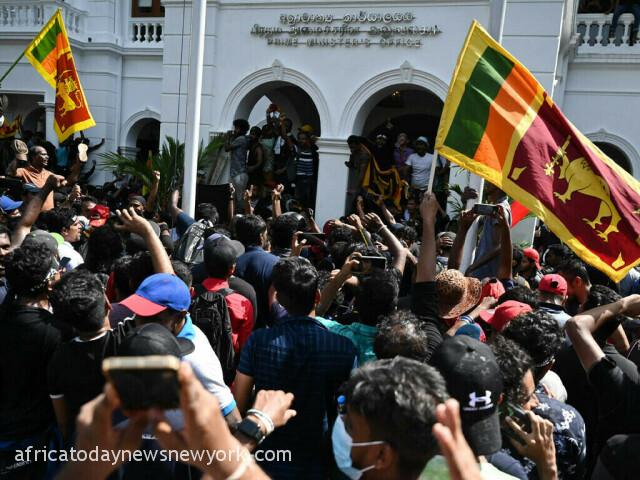The ongoing protest movement in Sri Lanka reached its 100th day on Sunday having forced one president from office and now shifting focus to his successor as the country’s economic crisis soared.
Africa Today News, New York recalls that ex-President, Gotabaya Rajapaksa fled his palace shortly before demonstrators invaded it last weekend and on Thursday resigned from the presidency.
Sri Lanka’s financial turmoil has been blamed on his poor management skills, which has forced its 22 million people to endure shortages of food, fuel, and medicines since late last year.
The campaign to remove Rajapaksa, organised mainly through posts on Facebook, Twitter and TikTok, drew people from across Sri Lanka’s often unbridgeable ethnic divides.
United by economic hardships, minority Tamils and Muslims joined the majority Sinhalese to demand the ouster of the once-powerful Rajapaksa clan.
It began as a two-day protest on April 9, when tens of thousands of people set up camp in front of Rajapaksa’s office — a crowd so much larger than the organisers’ expectations that they decided to stay on.
Read Also: Sri Lankan Acting President Declares State Of Emergency
Under Sri Lanka’s constitution, Prime Minister Ranil Wickremesinghe was automatically installed as acting president following Rajapaksa’s resignation and is now the leading candidate to succeed him permanently in a parliamentary vote next week.
However the veteran politician is despised by the protesters as an ally of the Rajapaksa clan, four brothers who have dominated the island’s politics for years.
Social media activist and protest campaign supporter Prasad Welikumbura said Wickremesinghe too should go.
“Its been 100 days since it started,” Welikumbura said on Twitter.
“But, its still far from any concrete change in the system. #GoHomeRanil, #NotMyPresident.”
Rajapaksa’s elder brother Mahinda resigned as premier in May and he appointed Wickremesinghe to replace him — his sixth term in the post — despite his being an opposition MP representing a party with only one seat in parliament.
The move did little to assuage the protesters’ anger, and when they stormed Rajapaksa’s tightly-guarded 200-year-old Presidential Palace they also set Wickremesinghe’s private home ablaze.
Now the Rajapaksas’ SLPP party — which has more than 100 MPs in the 225-member parliament — is backing Wickremesinghe in the vote due Wednesday.

